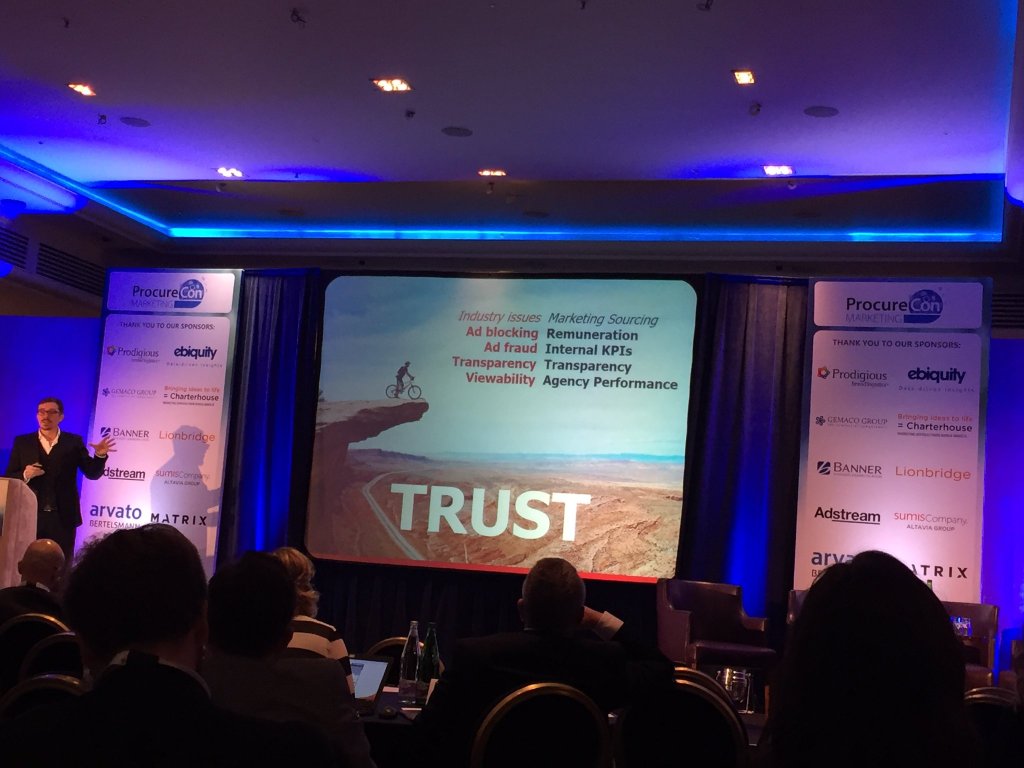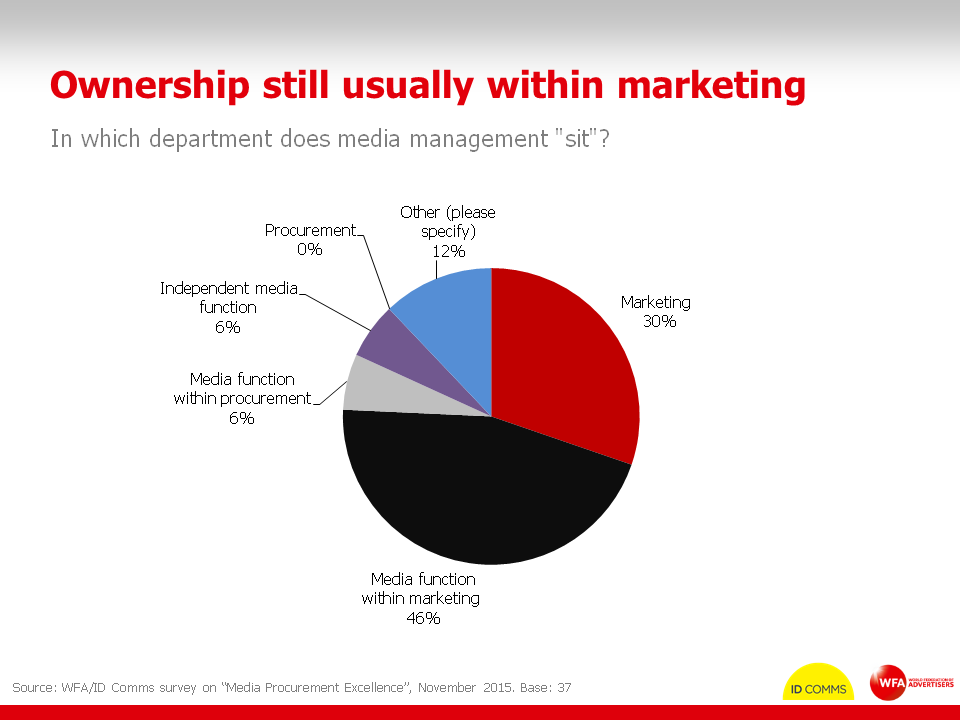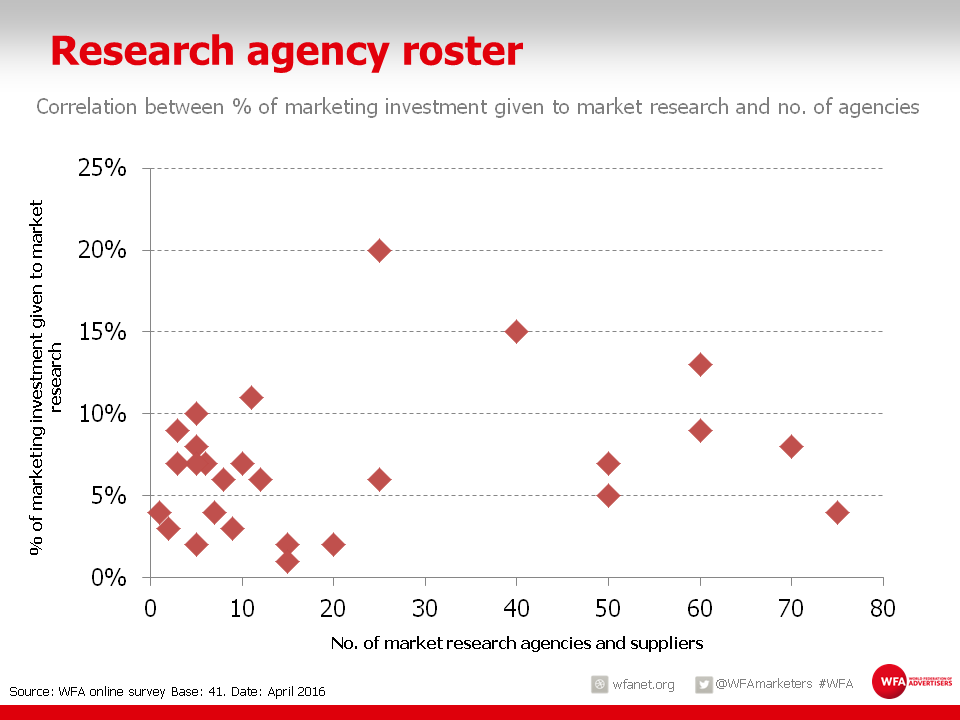On 14-15 June, WFA chaired the first two days of ProcureCon Marketing in London - a three-day event for marketing procurement specialists to come together and discuss a wide array of sourcing topics.
The main focus of the first day was around
collaboration with stakeholders - one that continues to be a pain point for many procurement specialists, no matter how advanced or mature their function is. The attendees were mostly from the UK and Northern Europe, and that certainly had an impact on the topics discussed.
Elsewhere in the world, the debate around agency transparency is raging, and naturally the topic of the
ANA/K2 Media Transparency report came up once or twice. Interestingly, it was referred to as
the transparency discussion in the US by a few attendees, which may well suggest that agency business models and the way rebates and AVBs work is better understood and accepted in Europe than in the US.
There were a few takeaways worth noting:
 Stakeholder collaboration
Stakeholder collaboration
“
If procurement isn’t culturally aligned to marketing then marketing won’t want to work with them.” This was a comment by one panellist on stage and sums up the need for procurement to be a trusted partner of marketing, otherwise the relationship will break down.
Sourcing can do that by examining the language it uses to ensure it doesn’t alienate marketers (partners vs. vendors, etc.). Indirect Procurement heads can also revise the metrics used to gauge sourcing performance and align them with marketing KPIs so that everyone has common objectives, whether they be brand growth or hard financial savings targets. Sourcing can also read up and get the training and exposure within marketing to ensure they are knowledgeable partners. Lastly, another panellist mentioned that procurement’s position allows it to gather and present internal and external data which marketing does not have access to, thereby supporting commercial decisions and the creation of business cases in a way no other function can.
Putting effort into all these areas is a great start in building a more collaborative, value-based relationship with marketing.
Media capabilities

Media is changing so fast that it is a challenge for procurement to keep up. WFA ran a session on media capabilities with Mars and Heineken and focused on the challenges in relation to getting proper control of global media spend.
Many feel that media needs to be higher up the organisation in terms of visibility and oversight. One way some do this is by having a “
Media Leadership Council” comprising a global media director, regional media managers and head of global media procurement. Some involve their media agency strategic resources too, but the tendency is generally fewer people involved to ensure smooth decision making. Right now there is a lot of conversation around officially separating planning and buying in separate agencies; not least because of the transparency debate.
However you approach this, media is changing fast, so at the very least, procurement needs to be able to encourage strong agency partnerships while controlling the experiments. This ensures that the best results can be scaled up regionally or globally as quickly as possible.
Working with start-ups
All marketing teams want to be working with the most cutting-edge partners, and
Unilever’s Foundry is an in-house incubator and accelerator designed to do just that. We heard from them, and also
The Bakery (who help large multinationals find the right start-ups) on how procurement can best create lean ways of working that enable partnerships to thrive.
Many aspects of RFx, tendering, e-sourcing, PO raising and invoicing can be time-consuming and costly for small start-ups, many of whom do not have the large account servicing teams that clients are used to working with in their agencies. Sourcing needs to be mindful of that and make sure processes are in place to reduce the “terms of engagement” without increasing the risk. It’s a big ask, but one that means marketing can be much more agile.
Market research

WFA led a session on how procurement can go about sourcing market research more effectively. One topic that came up was whether clients prefer large networked agencies, or smaller boutique suppliers.
There was some consensus that large networks do well on syndicated or multi-country projects, but boutique agencies are good for qualitative, specific local-based projects. Most people agreed a mix is best. The recommendation came to lift up providers from pure data collectors to real partners and help them to grow their business and their offering. Their capacity to innovate is what you’re actually buying, after all. An oft-stated watch out is to be aware of your spend with the larger suppliers. In some fields there is not a lot of choice, so consider the breadth of marketing’s involvement across multiple departments in multiple markets and see if and how contracts can be consolidated.
WFA’s
SOURCINGFORUM brings together over 800 global marketing procurement specialists from around the world. To find out more about how you can be a part of the conversation, get in touch with Steve Lightfoot at
s.lightfoot@wfanet.org


